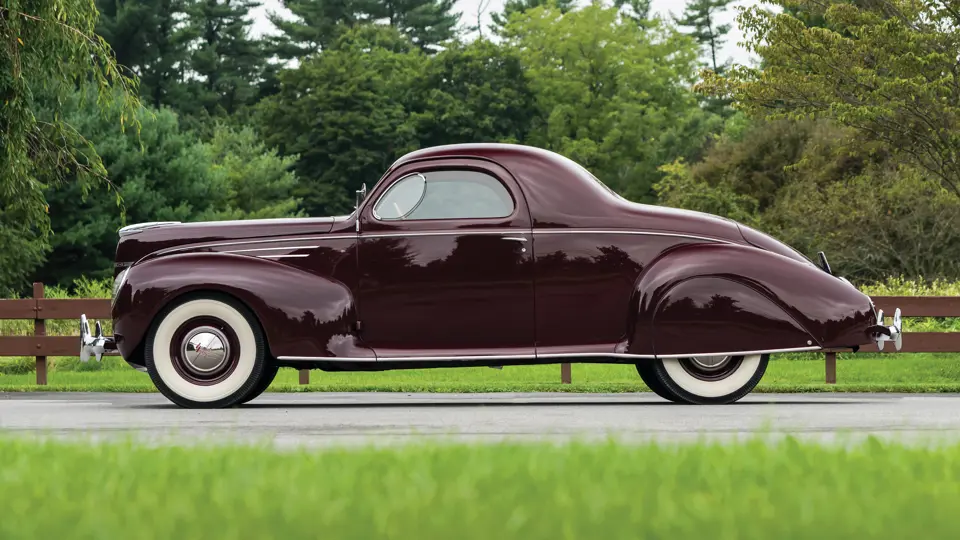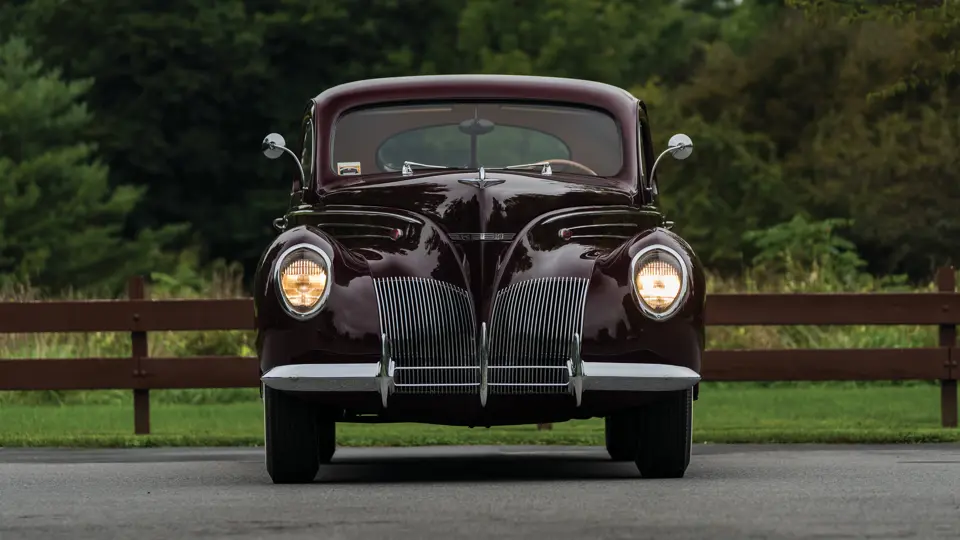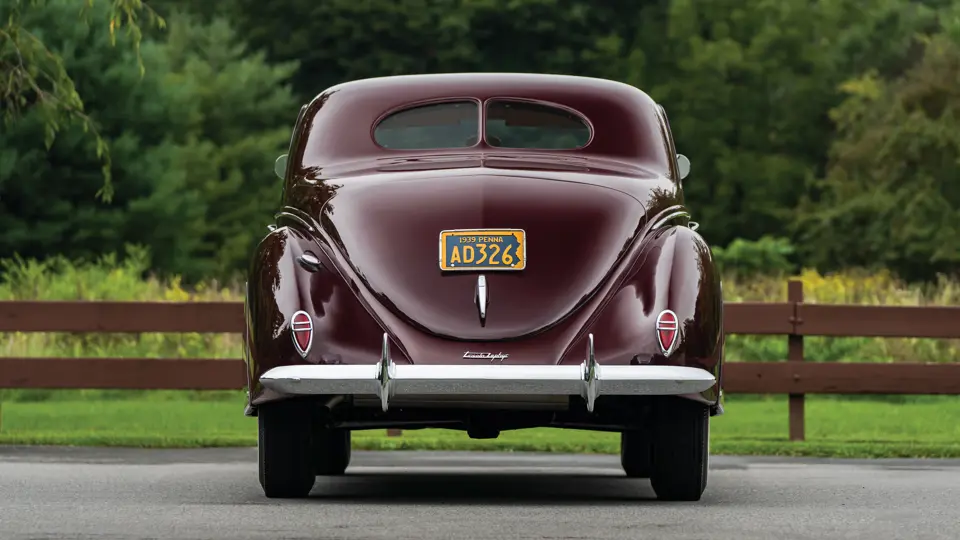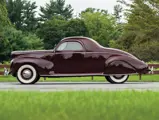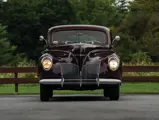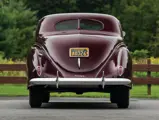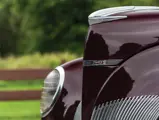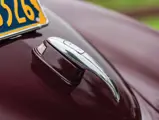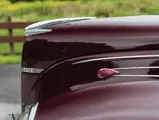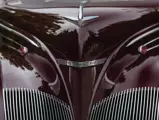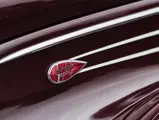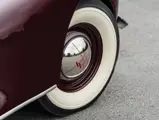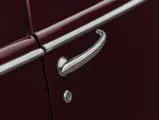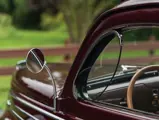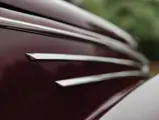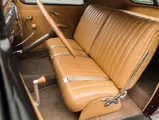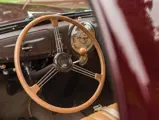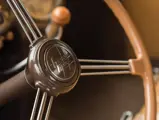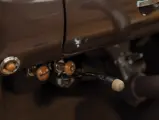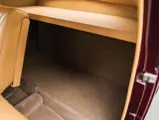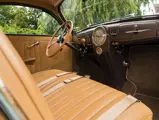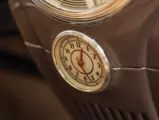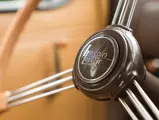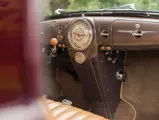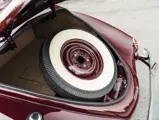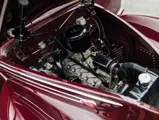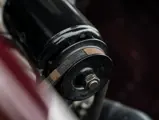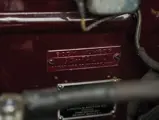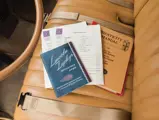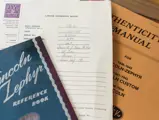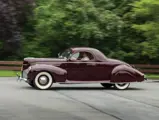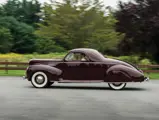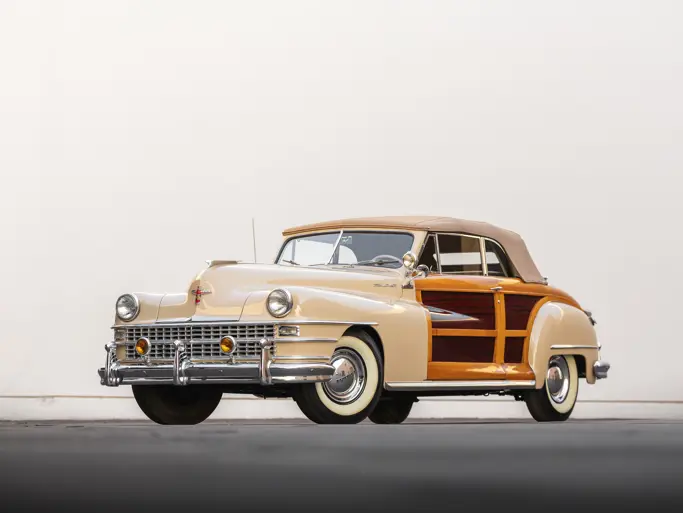On 2 November 1935, the Lincoln Motor Company unveiled a new model, called Lincoln-Zephyr. Priced at $1,275 to $1,320, it was less than a third the price of the least expensive Model K Lincoln. For Lincoln, which had sold barely 1,400 cars for 1935, the Zephyr was a fresh breeze in the Depression-weary automobile doldrums.
The new car had been developed from designer John Tjaara’s innovative Sterkenburg concept studies of the late 1920s. Smooth and streamlined, the Sterkenburg had a low frontal aspect and was designed for a rear-mounted engine. Edsel Ford became interested in Tjaarda’s work, and Briggs, one of Ford’s body suppliers, built a mockup that appeared at the 1934 Century of Progress exhibition in Chicago.
For the production version to be manufactured by Ford, the engine was moved to the front, but the advanced bridge-truss integral frame was retained. Since it was to carry the Lincoln name, a V-12 was called for, but instead of the big engine from the Model K, a twelve based on the Ford V-8 was developed. Initially sold as a four-door sedan or a two-door “Coupe-Sedan,” the Lincoln-Zephyr offered a “Zephyr-smooth ride with all the passengers cradled between the axles.” A division-window Town Limousine was added in April 1936, and for the model year nearly 15,000 Zephyrs were sold, while deliveries of big Lincolns hovered around the 1,500 mark.
A particularly sleek and handsome three-window coupe debuted for 1937, and the following year designer E.T. “Bob” Gregorie gave the car a new nose. The 1938 Lincoln-Zephyr was modestly restyled, with twin grilles placed in the forward end of the “catwalk” section of the fenders. Not merely a styling gimmick, this change markedly improved engine cooling. The vee-shaped nose was softened, and headlamps were made flush with the fender contours. In addition to the sedan, coupe and coupe-sedan, as Ford called the two-door, six-passenger model, two new open styles appeared, a convertible coupe and convertible sedan.
For 1939, Lincoln-Zephyrs received hydraulic brakes. Henry Ford had finally dropped his objections, and hydraulic binders were adopted for all models except the big K Lincolns, themselves on life support. External changes included a raised hood line, a new grille with vertical bars, and running boards were concealed by extending the bottoms of the doors and quarter panels. The front bumper was given an open center section that allowed greater airflow. The instrument panel was redesigned. During the year, custom interior options became available, with color-keyed fabrics and bronze-trimmed fittings and ornaments.
The three-passenger Lincoln-Zephyr coupes are recognized as some of the most beautiful designs of the period. Sleek and seductive, they appeal to one’s inner instincts. This example, in Lincoln’s Coach Maroon, is no exception. A two-owner car from new, it features the Columbia overdrive, radio, heater and defroster, a tan leather interior, and rear fender skirts. The “weeping willow” hinge-mounted rear-view mirrors and wind-wings on the doors give the car an elegant air. The car was completed on 25 November 1938. It has been retrofitted with seat belts for two. The odometer shows barely 32,000 miles, understood to be correct.
Just 2,500 Lincoln-Zephyr Coupes were built for 1939. This car is undoubtedly one of the nicest.






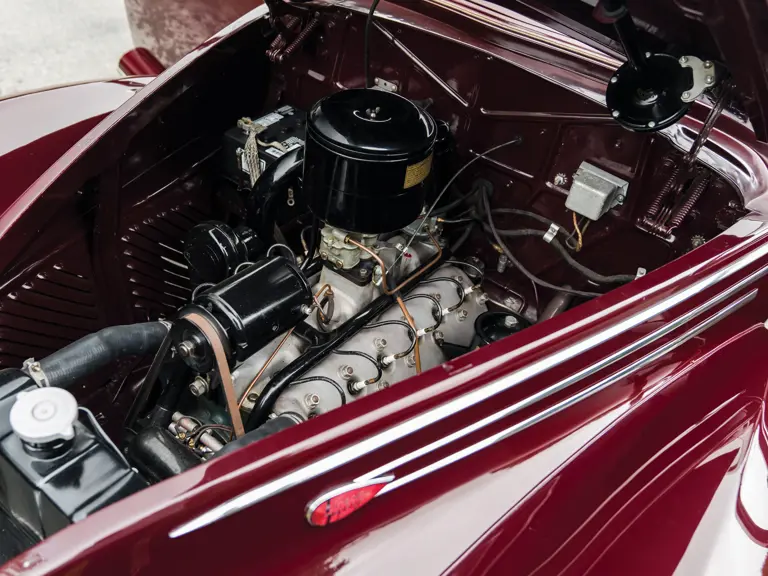
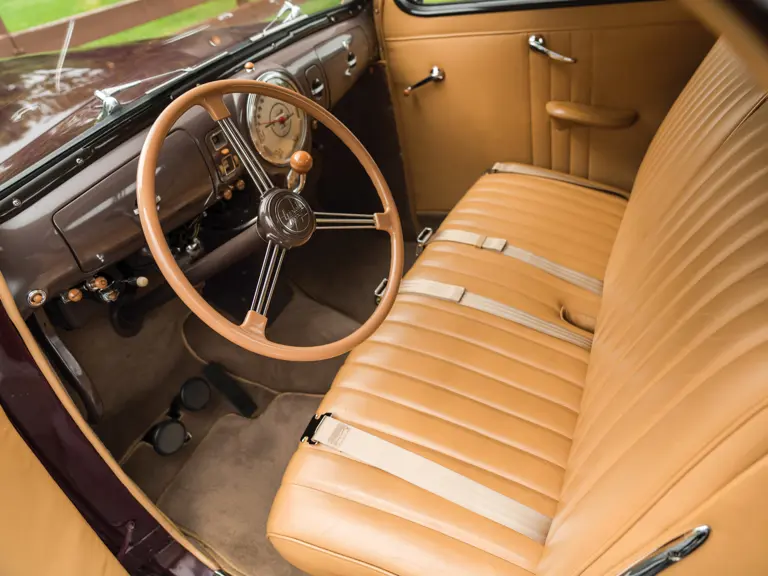
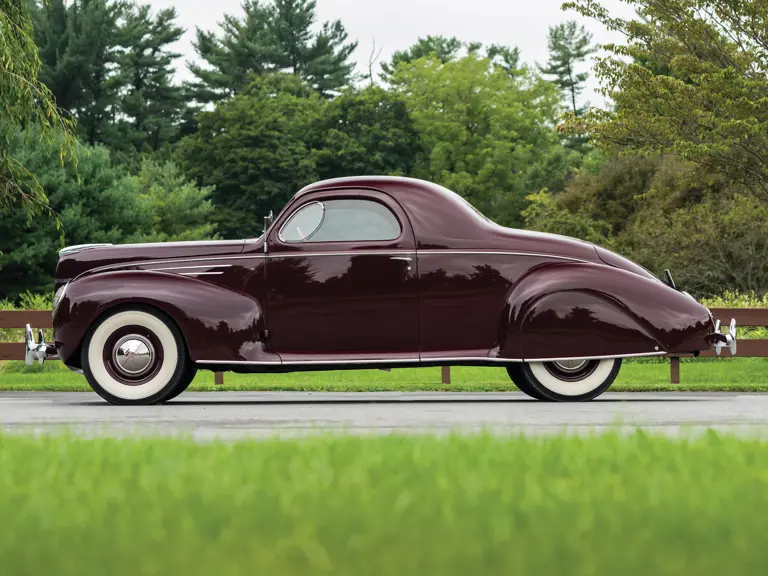
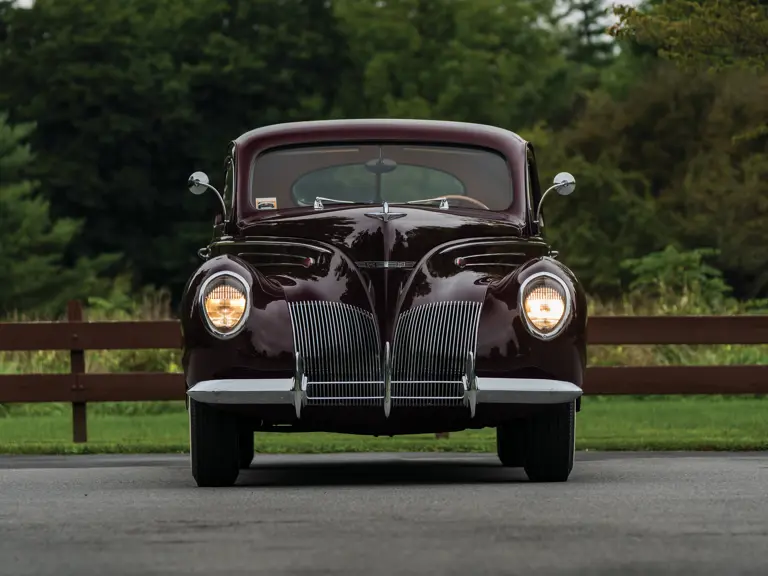
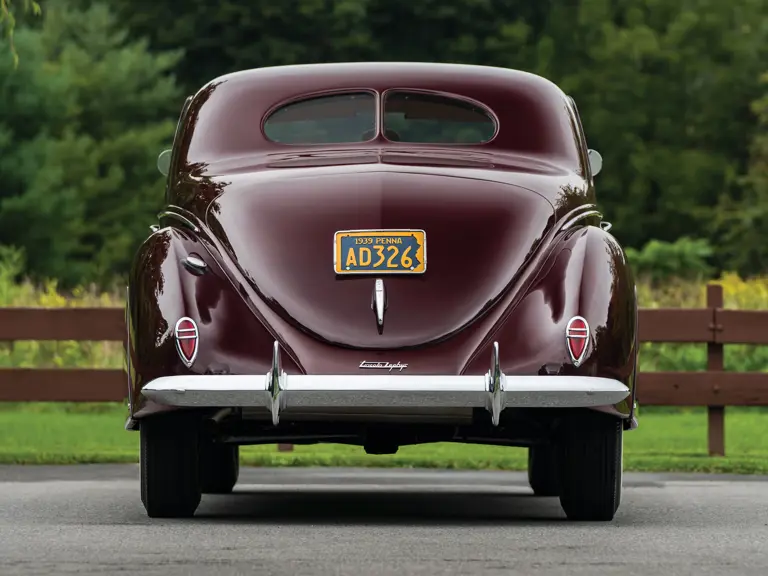


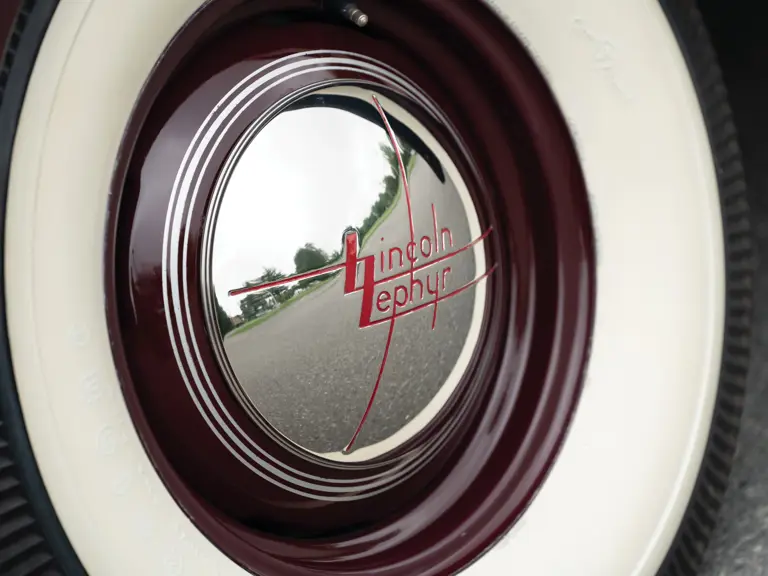
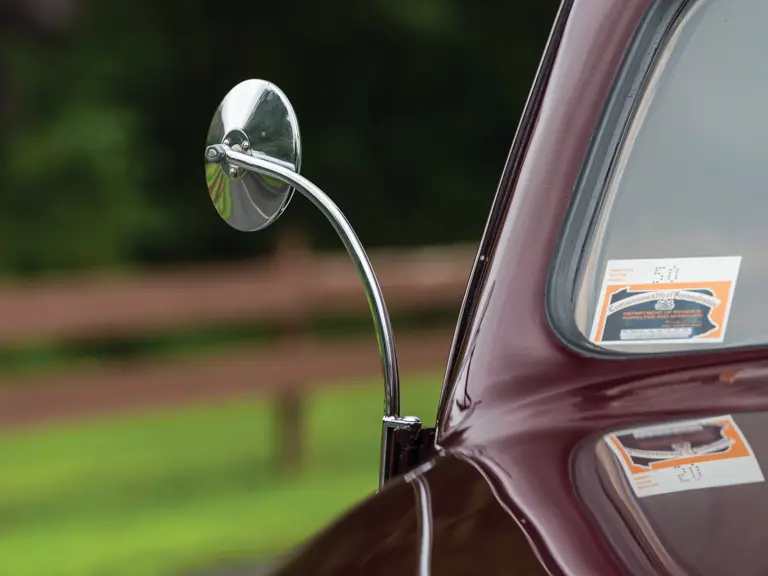

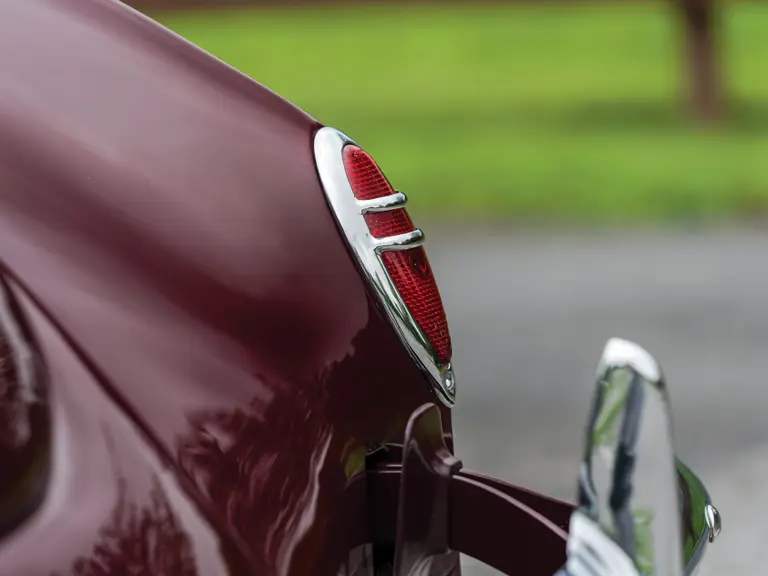
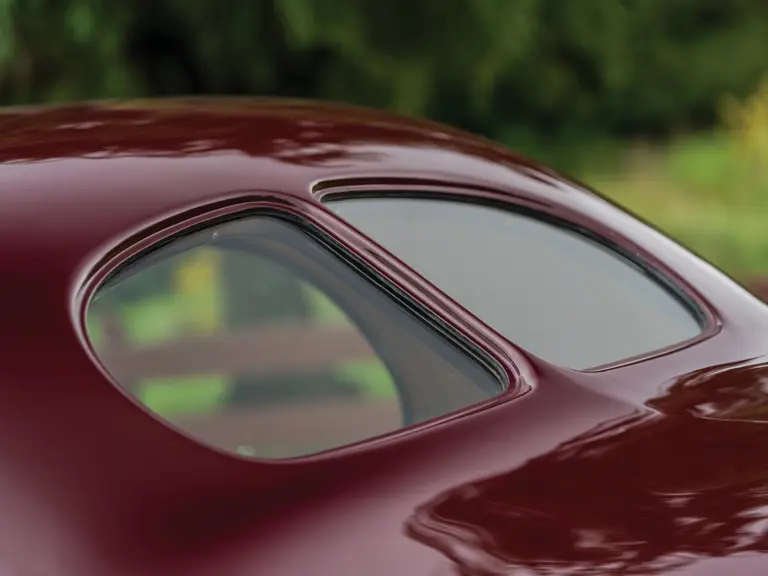

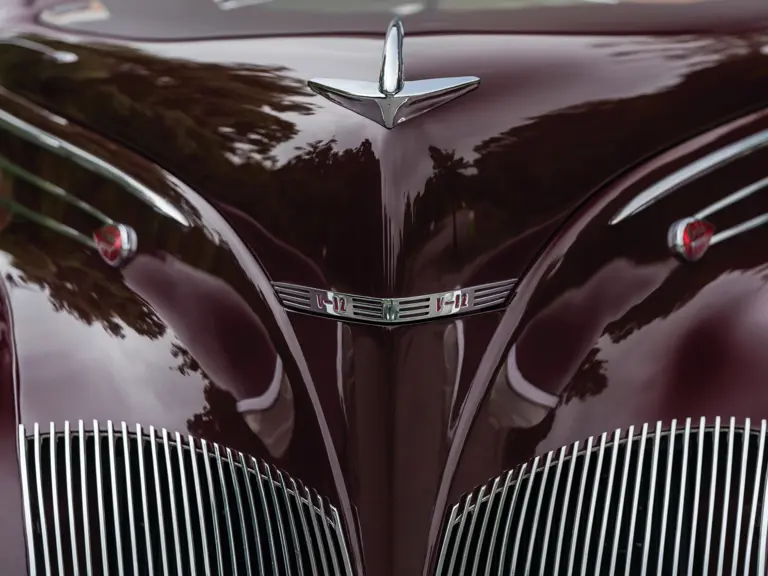
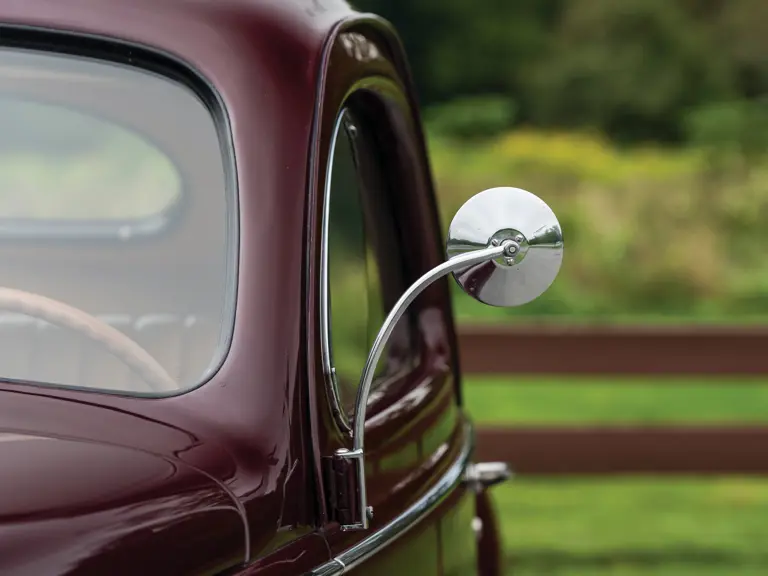
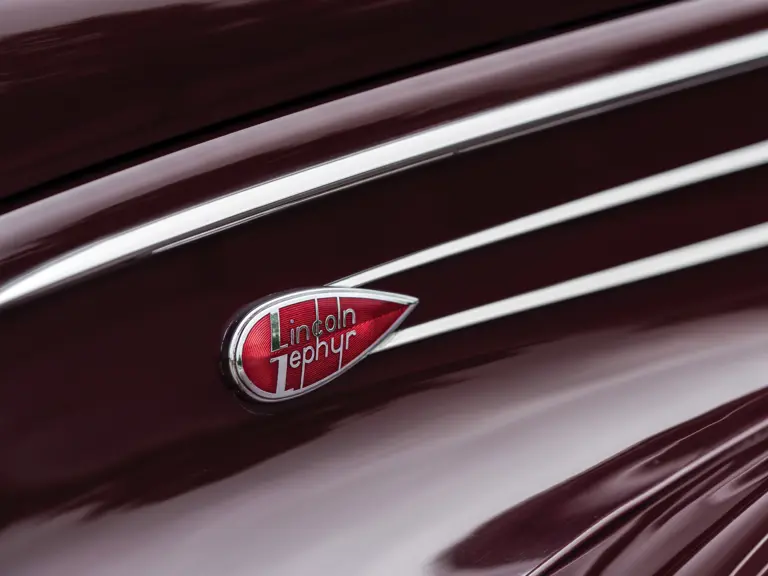
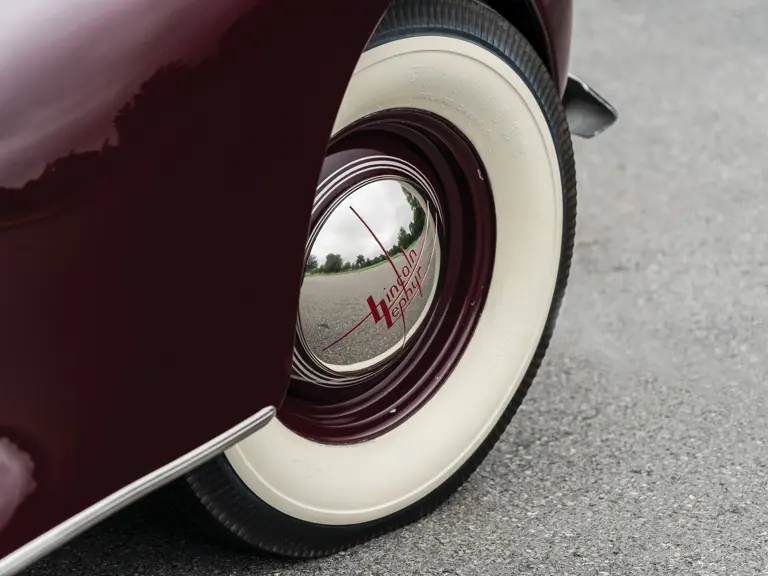
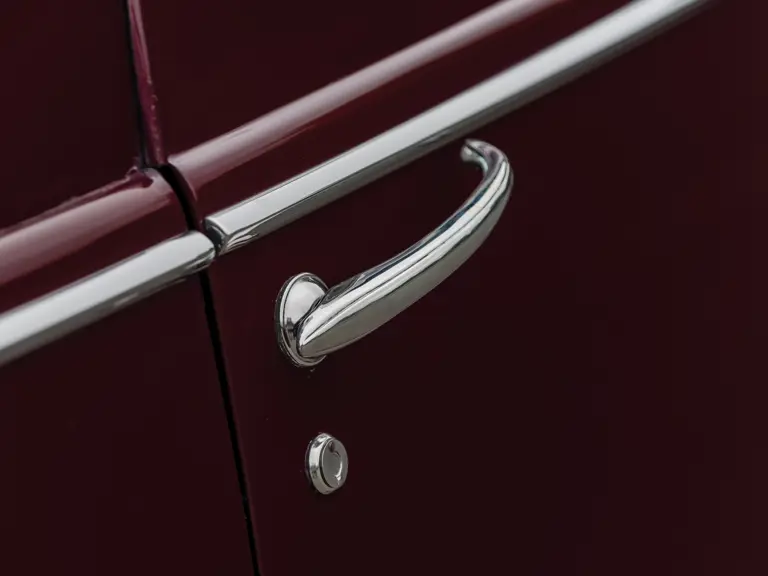
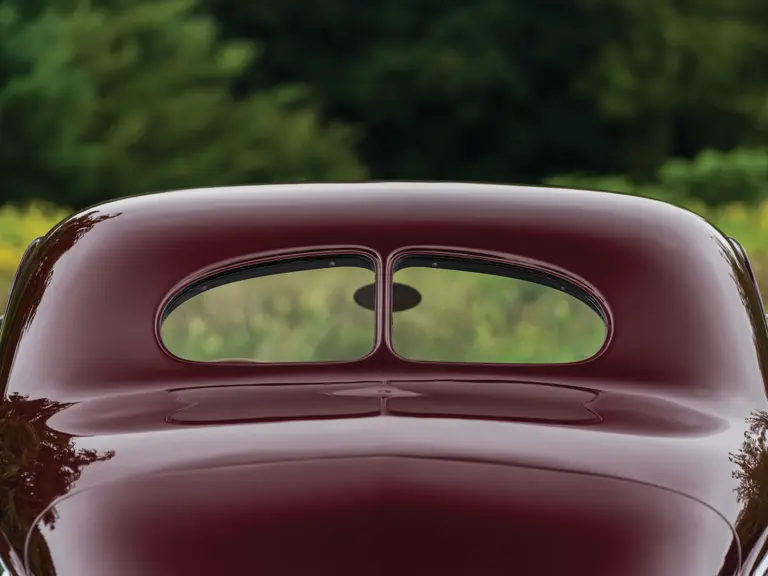

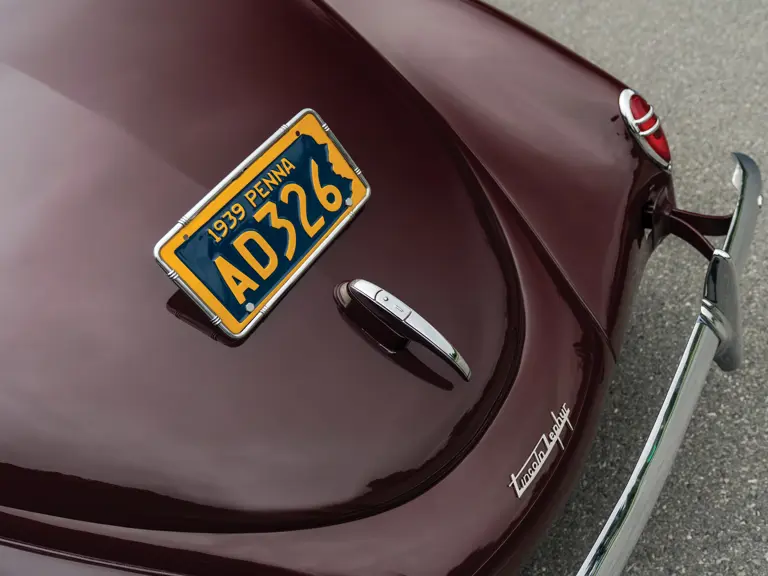
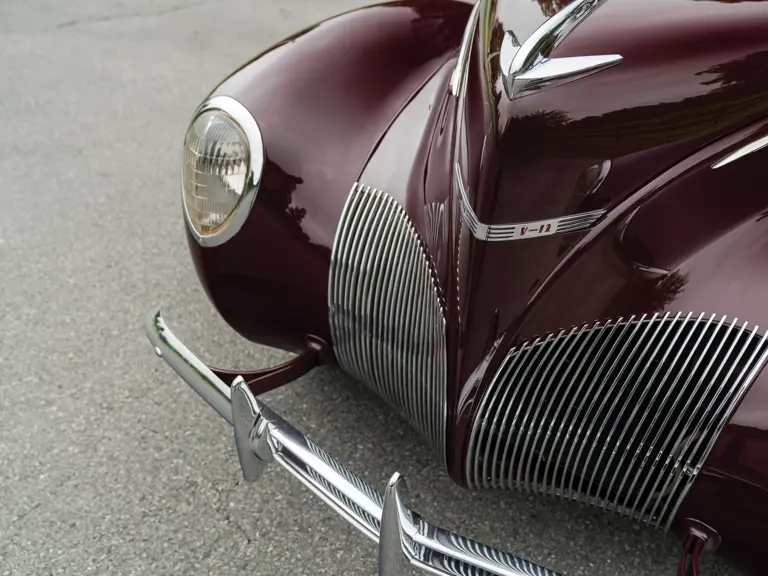


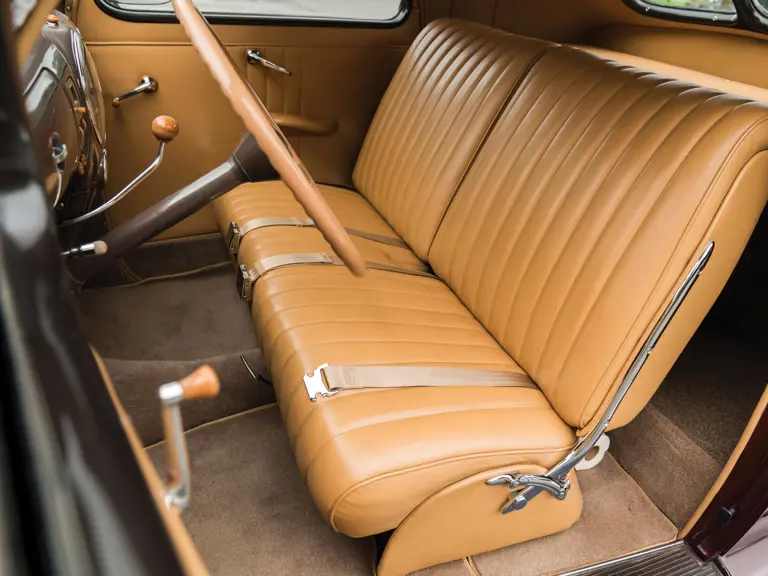

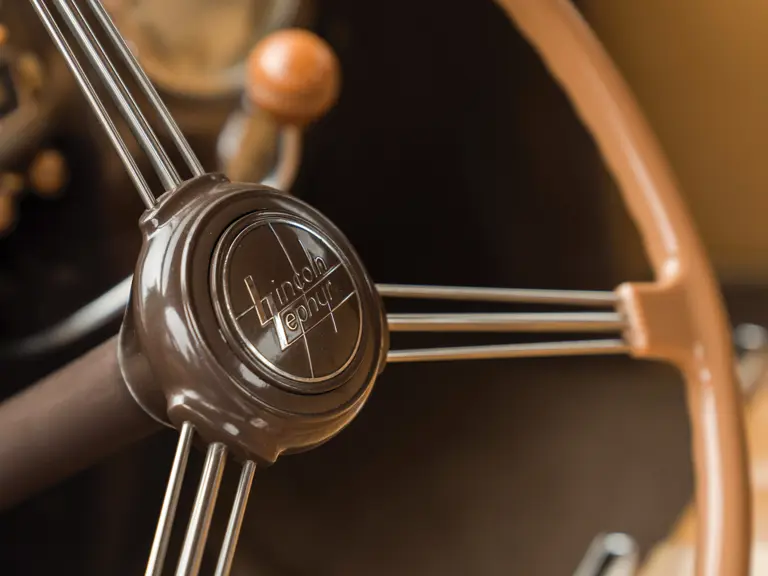
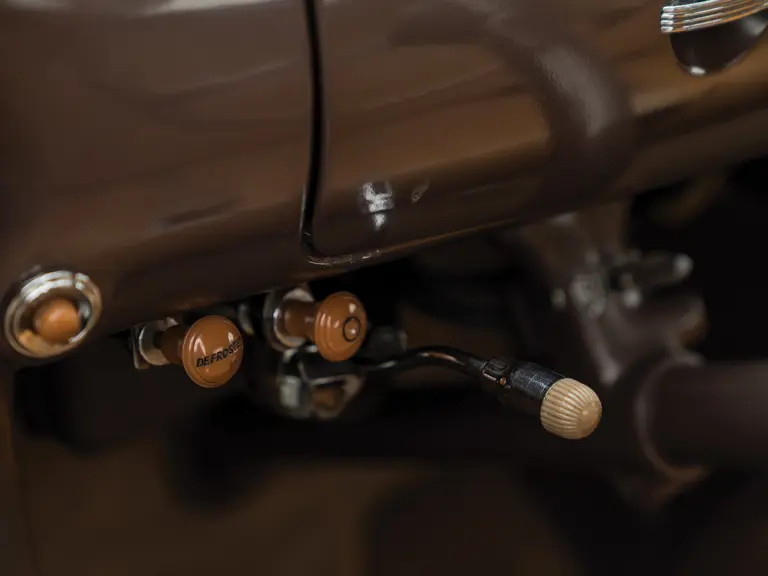
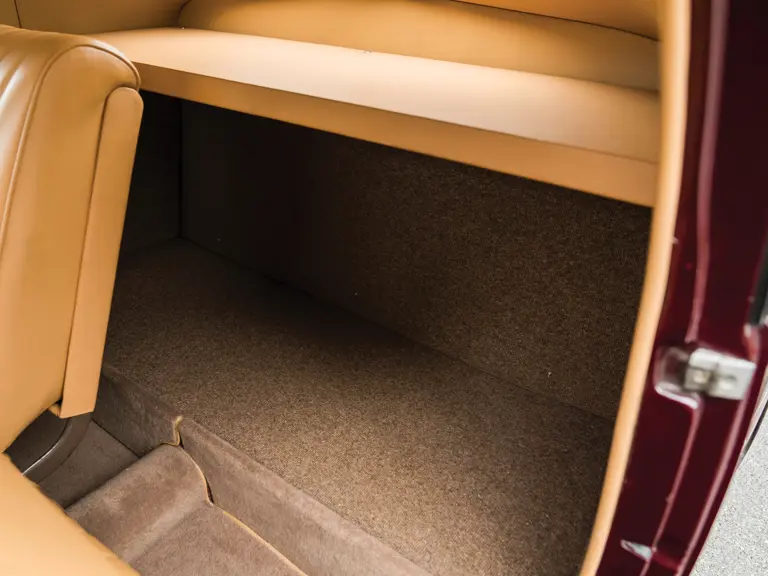
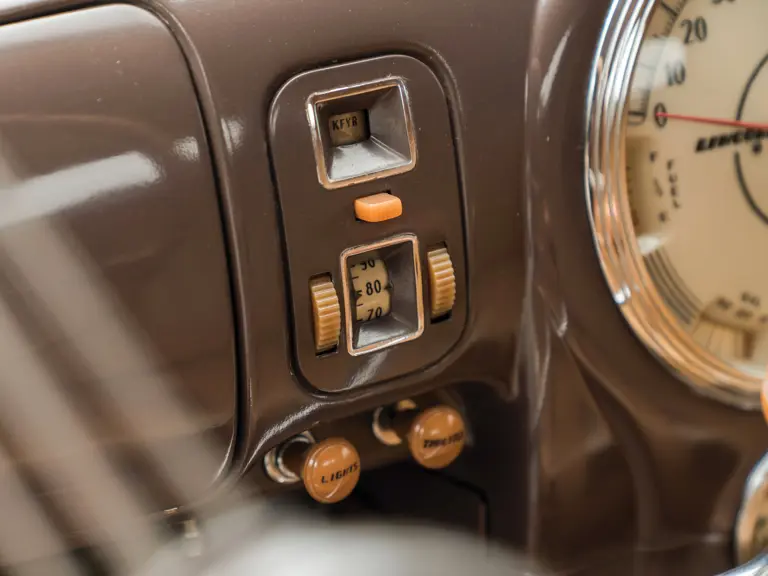

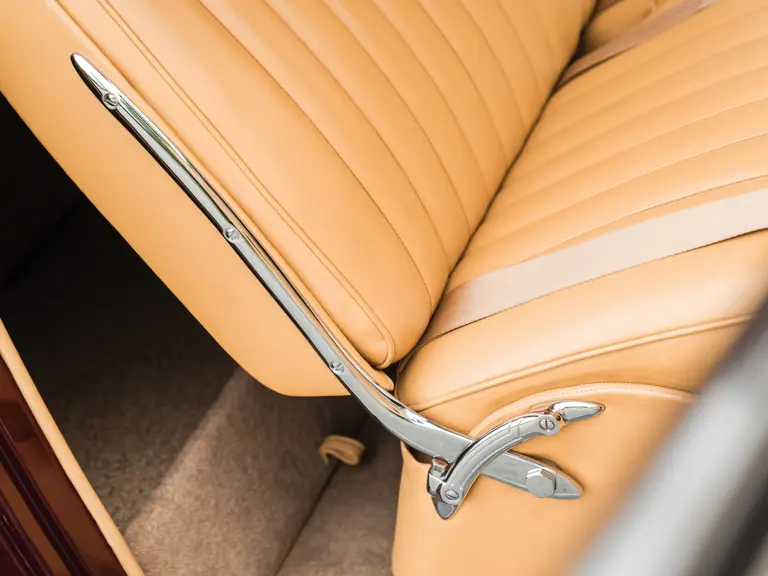
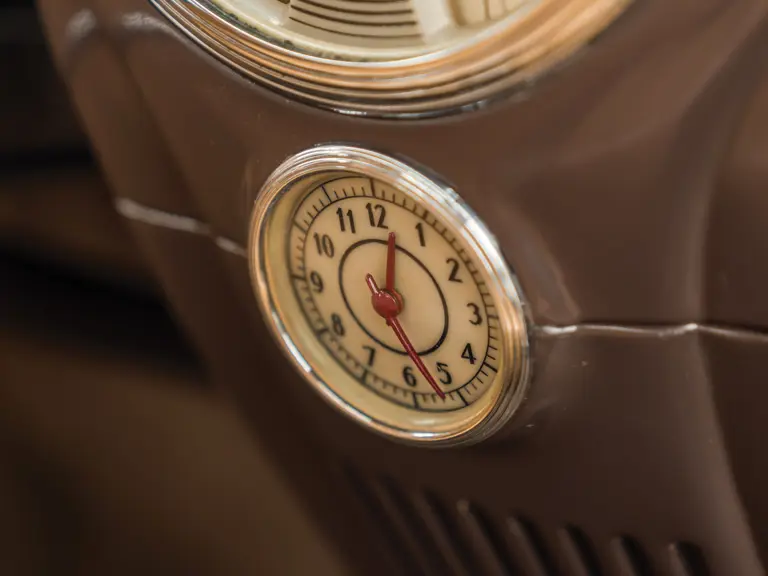
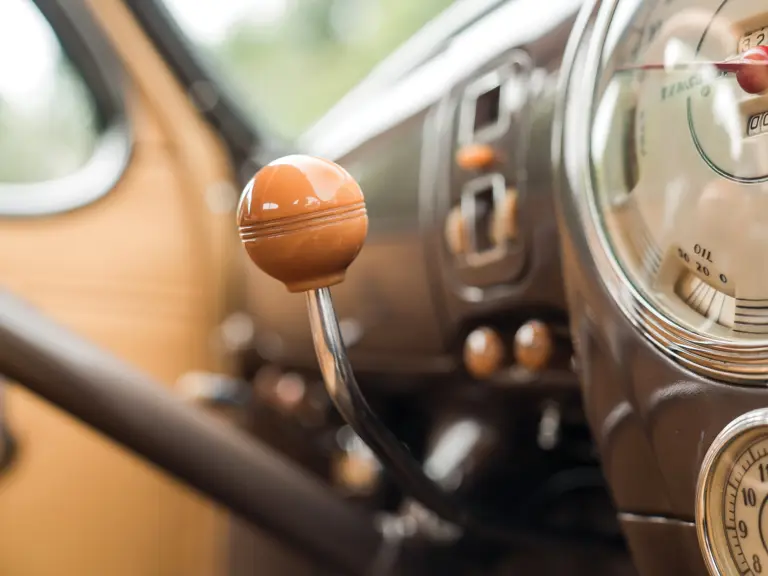

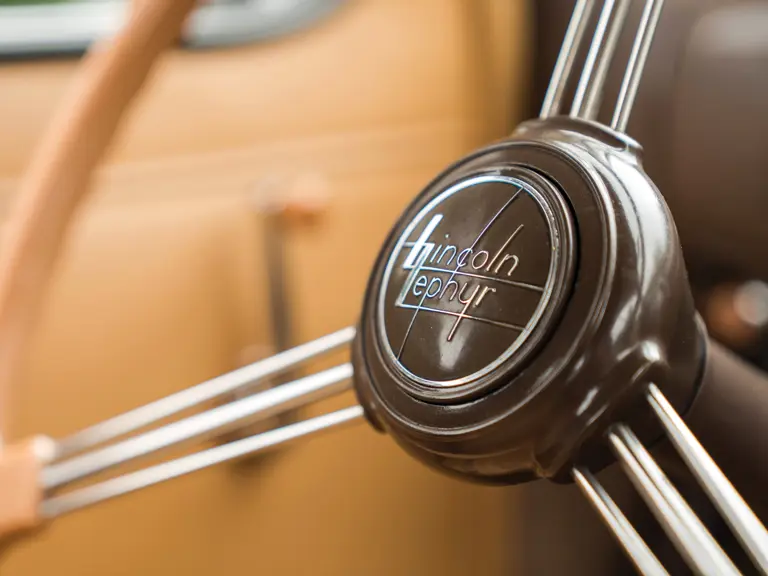

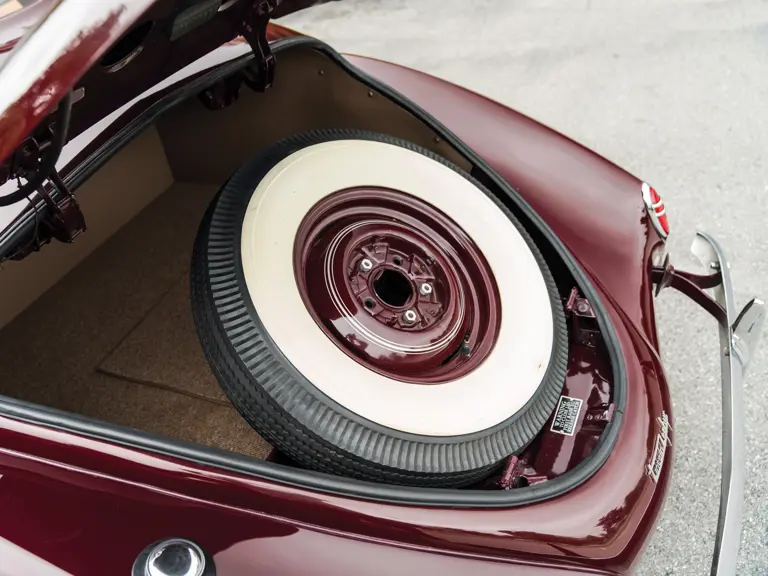

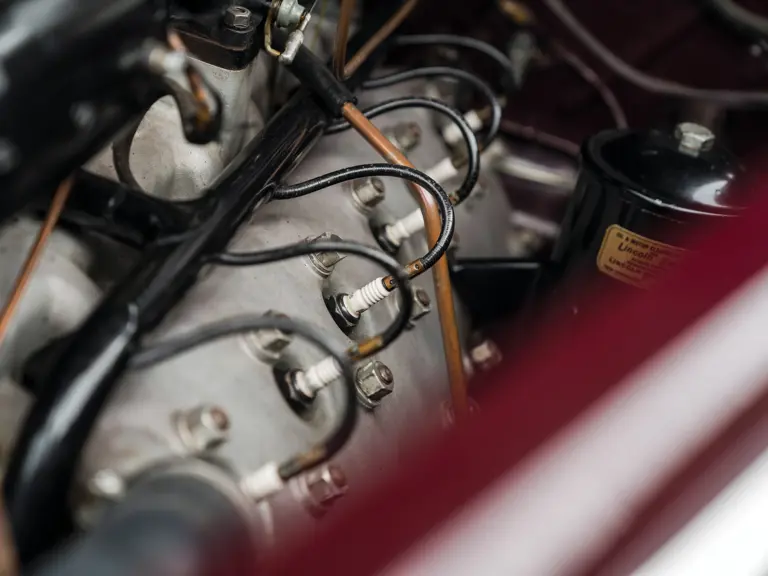
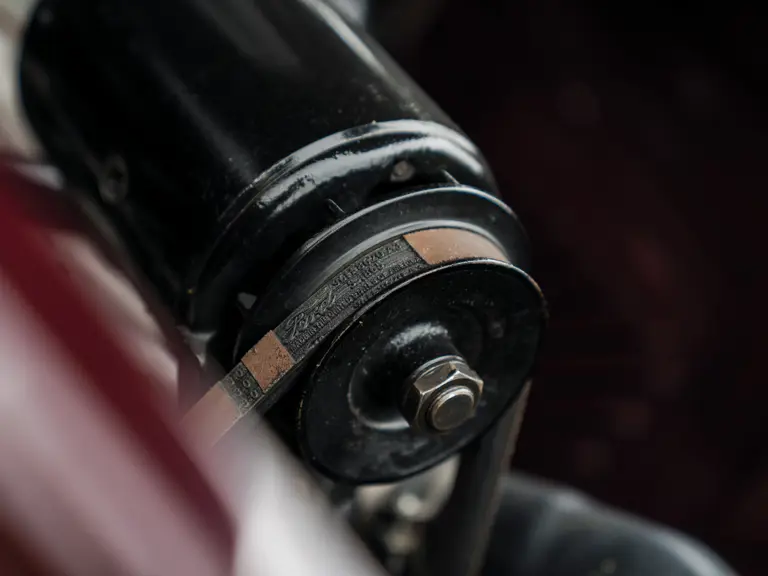
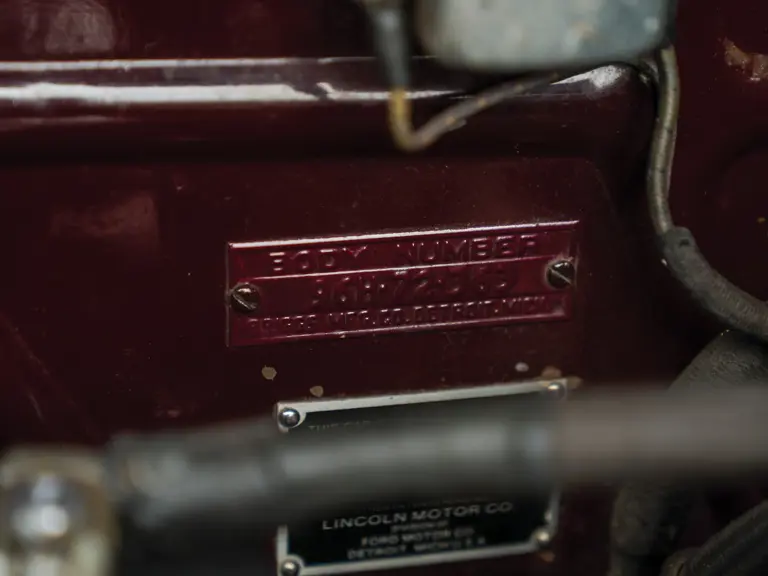
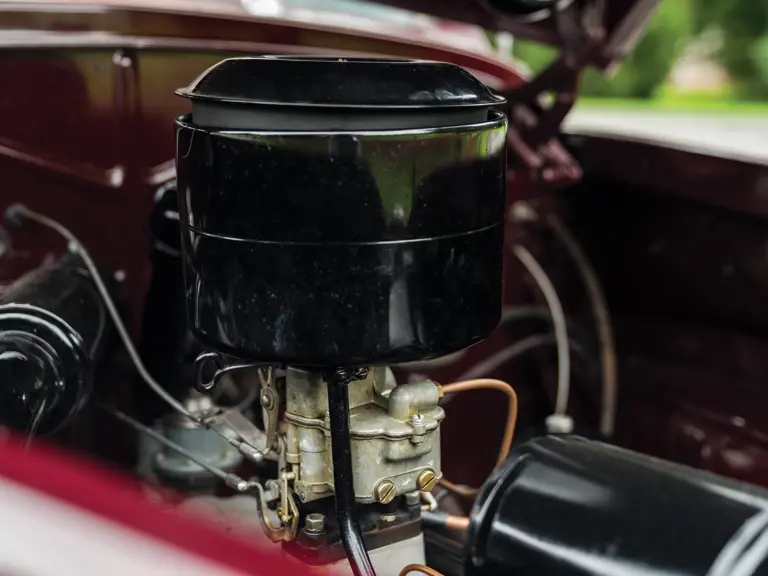
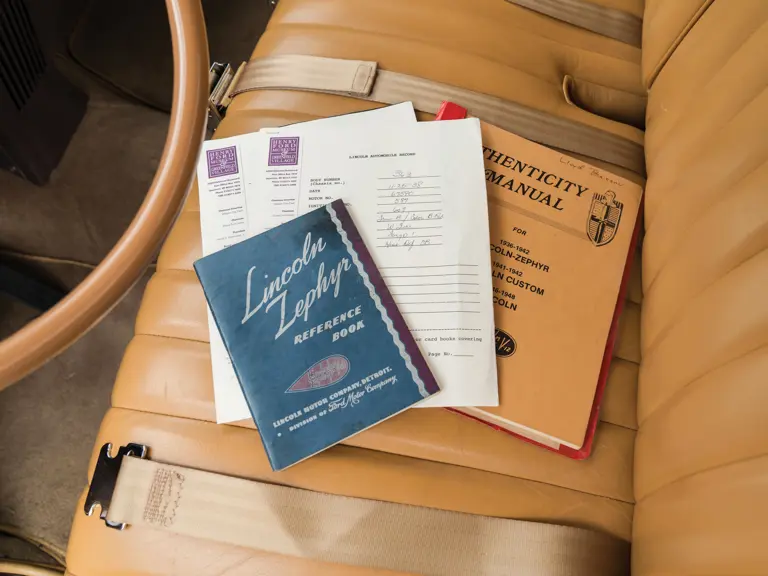
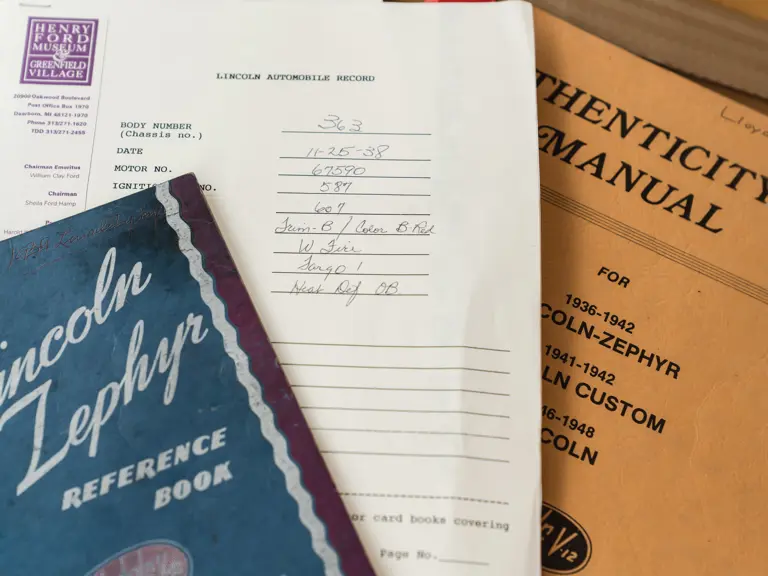
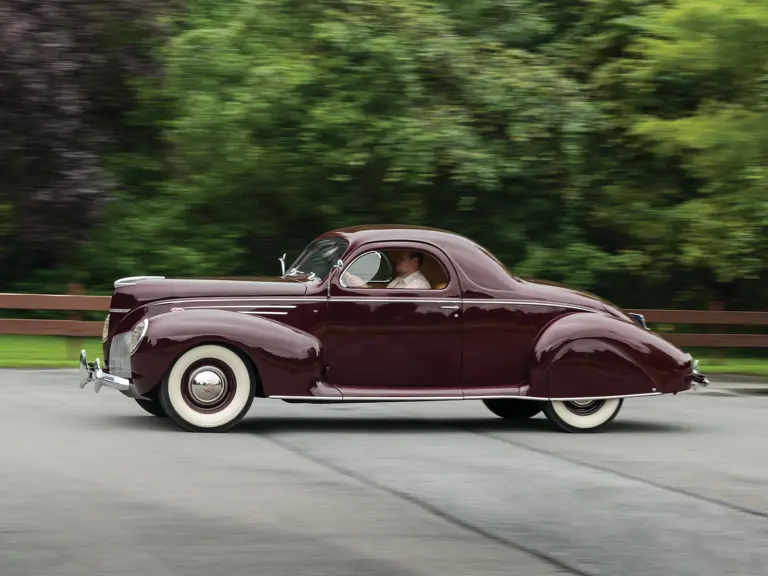
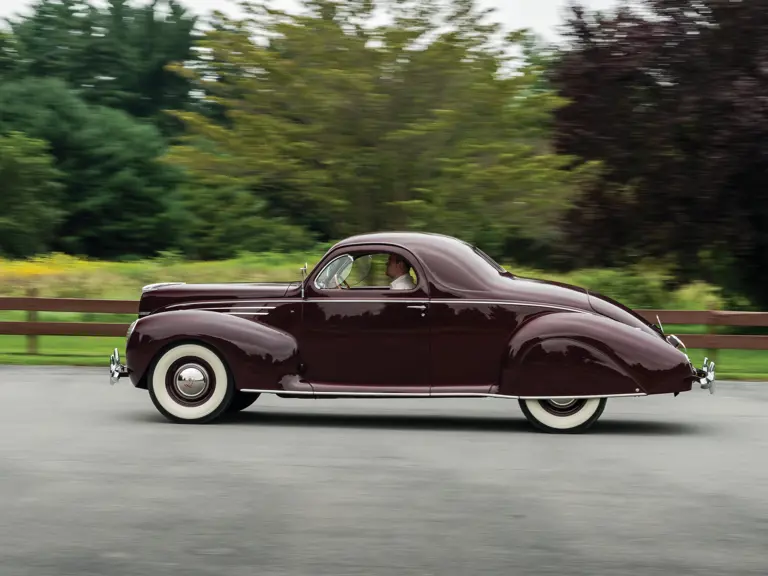
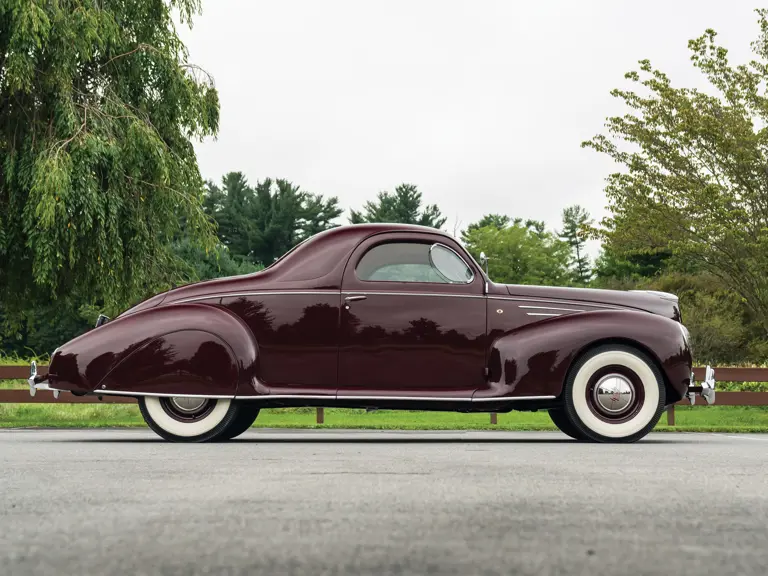
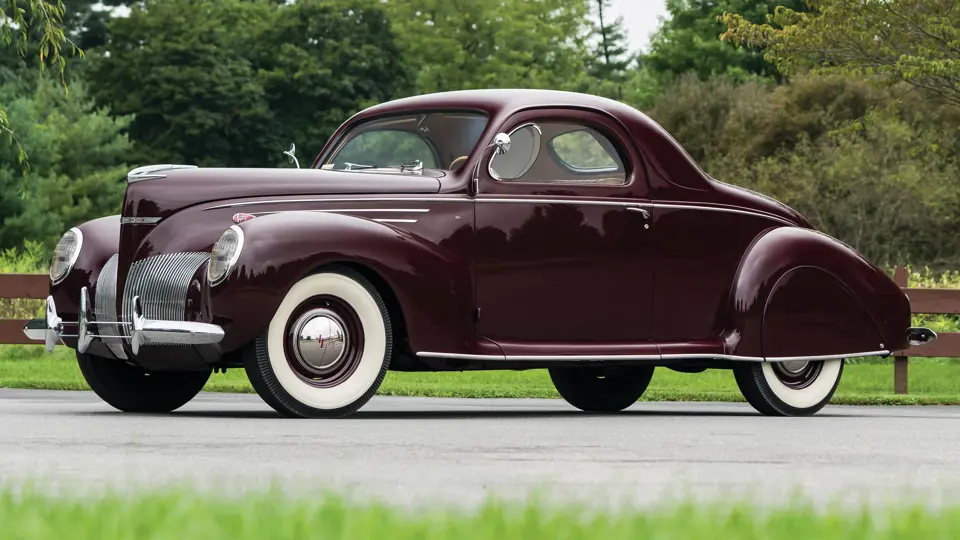
 | Hershey, Pennsylvania
| Hershey, Pennsylvania
